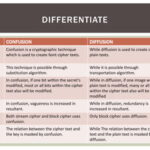In the ever-evolving landscape of cyber security, one question looms large: Is HMAC-SHA256 still secure in today’s environment? This inquiry is far from trivial. With the constant advent of sophisticated attacks and the increasing processing power available to adversaries, evaluating the security of cryptographic standards necessitates a thorough analysis.
HMAC (Hash-based Message Authentication Code) is a cryptographic construct designed to provide integrity and authenticity to a message. When combined with SHA-256, a widely acclaimed hashing algorithm, it forms a robust defense mechanism against numerous cyber threats. However, the question remains: as technology progresses, does the efficacy of HMAC-SHA256 diminish, or does it stand resilient against emerging challenges?
Firstly, it is imperative to examine the fundamental workings of HMAC. HMAC utilizes a hash function, in this case, SHA-256, alongside a secret key to create a unique output that ties together the message and the key. This relationship is crucial; if an attacker cannot access the secret key, forgering a valid HMAC becomes virtually impossible. Yet, the crux of the matter lies in the strength of the underlying hash function. Can SHA-256 withstand robust cryptanalytic attacks, given that the security paradigm is ever-shifting?
In terms of resistance to collision attacks—where two distinct inputs generate the same hash output—SHA-256 remains strong. The size of its output, 256 bits, provides a significant barrier. With an estimated 2128 operations required to find a collision, it presents a daunting challenge for potential attackers. However, a single metric does not tell the whole story. The cryptographic community continuously assesses the theoretical and practical aspects of hashing algorithms, thus remaining vigilant against potential vulnerabilities.
Furthermore, advancements in quantum computing threaten to disrupt conventional cryptographic security. Quantum algorithms, such as Grover’s algorithm, could allow for significantly faster brute-force attacks. While SHA-256 is not inherently vulnerable to quantum attacks, the potential for reduced operation complexity raises legitimate concerns. The deployment of quantum-resistant algorithms is a burgeoning area of focus, prompting an exploration into alternative hashing methodologies that promise greater security under a quantum regime.
Moreover, adversaries are employing more sophisticated techniques than traditional brute-force approaches. As machine learning and artificial intelligence burgeon, they could expedite the discovery of cryptographic weaknesses. Though this may seem abstract, it introduces real-world implications. Could a machine learning algorithm efficiently analyze patterns in generated HMAC responses, thus constructing a theoretical vulnerability? While there currently exists no concrete evidence of this occurring with HMAC-SHA256, the interrogation of such possibilities underscores the need for perpetual vigilance.
Nonetheless, practical aspects must also be considered. The operational environment plays a pivotal role in cryptographic effectiveness. If HMAC-SHA256 is deployed improperly—such as with weak or reused keys—it is destined for failure. Inadequate implementation can lead to vulnerabilities that are benign to the algorithm itself. Thus, education about proper cryptographic practices is paramount. Many breaches can be traced back to mismanagement rather than flaws in the cryptographic algorithms themselves. Are organizations adequately preparing their personnel to understand the intricacies of key management and cryptographic standards?
In terms of adoption, HMAC-SHA256 enjoys widespread usage across various platforms, ranging from financial institutions to government agencies. Its prominence is both a testament to its effectiveness and a source of scrutiny. With software environments constantly changing, should developers cling to established standards that have served them well, or is it prudent to remain open to innovations in cryptographic practices?
The broader ecosystem of cryptography must also be recognized. As vulnerabilities are discovered across different algorithms and standards, it becomes clear that no solution is invulnerable. Thus, HMAC-SHA256 should not be viewed in isolation but as part of a larger cryptographic suite that includes various techniques aimed at maximizing security. For instance, the incorporation of additional layers, such as asymmetric cryptography, enhances the multi-faceted defense against potential attacks.
The potential for real-world implications deriving from perceived deficiencies in HMAC-SHA256 highlights a pressing concern: trust. Users must grapple with the reliability of platforms they engage with in a digital landscape inundated with threats. As more sophisticated cyber attacks unfold, the necessity for transparency in security practices becomes paramount. Can organizations foster trust and security when the cryptographic principles underpinning their frameworks are continuously scrutinized and tested?
In summary, while HMAC-SHA256 retains a significant position in today’s cryptographic landscape, it is not without its challenges. The resilience of this algorithm against evolving threats remains to be fully assessed. As technologies advance and adversarial techniques grow more sophisticated, the continuous evaluation of cryptographic standards is essential. Ultimately, the question remains: Is reliance on HMAC-SHA256 sufficient for organizations in an increasingly complex cyber environment, or should we remain vigilant and proactive, seeking out innovations to ensure robust security in the face of relentless challenges?








Leave a Comment